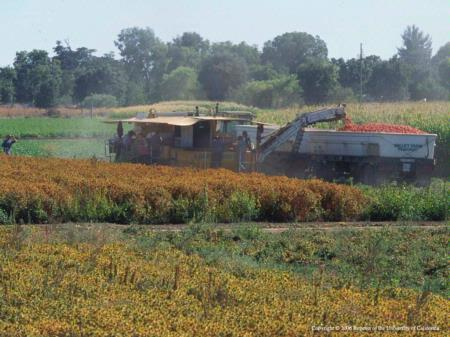Article: What it Takes to Successfully Introduce Mechanization of Harvest into a Cropping System
The following is an article from a California Agriculture magazine published in the year 2000, and in using two case studies from California, is quite instructive on what it takes to successfully introduce mechanization and automation into a cropping system.
A few summary points about mechanization of harvest and the article linked below.
Success is found in integrated programs of research work: In 1950, a breeder and agricultural engineer at UC Davis worked hand in hand to develop a system for mechanized harvesting of processing tomatoes. The plant breeder developed a tomato that could withstand the stress of mechanical harvest, while the engineer came up with a machine that could successfully remove the tomato from the plant.
The gains are worth the effort: This mechanized harvester reduced the labor requirement per ton of tomatoes to 2.9 hours from 5.3 hours. A similar arc of reduction of labor took place in rice, where combinations of cultural practices, plant breeding and mechanization resulted in a reduction of 4.5 labor hours to harvest a ton of dry rice in the 1930's to 0.4 labor hours to harvest a ton of dry rice in the early eighties.
Success takes time: After 12 years of hard work on the part of the team from UC Davis, the mechanical harvester for processing tomatoes was commercially available. In rice, the large reduction in labor hours noted above took close to fifty years. Nevertheless, they happened.
http://calag.ucanr.edu/archive/?article=ca.v054n03p51
So what does this all mean for us in the berry business? For one, waiting for Captain Marvelous to show up and build a machine in one go that picks fruit like a person in fields just like we are now growing them doesn't appear to have a precedent.
On the other hand, given the two case histories outlined above I am convinced that an integration of disciplines, a lot of hard work as an industry and the patience to support this endeavor through is what it will take to build the harvester we all want.
The article is very much worth the read, probably not more than 15 minutes of your time. Read it.

Mechanized harvest of tomatoes in California.

